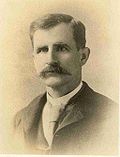Survey ship
Yukon was the first Coast Survey ship to bear the name. She entered Coast Survey service in 1873, having been built and outfitted in Kennebunk, Maine, specifically for Alaska service. The Coast Survey was renamed the Coast and Geodetic Survey in 1878.
Yukon is most noted for cruises under Acting Assistant William Healey Dall in 1873, 1874, and 1880, leading to the publication of the Pacific Coast Pilot - Alaska in 1883. The 1873 cruise surveyed the western half of the Aleutian Islands, the eastern half having been surveyed the previous year by the U.S. Coast Survey schooner USCS Humboldt. The 1874 cruise first proceeded to Sitka in Southeast Alaska, and then west along the coast of the Gulf of Alaska as far as Unalaska in the Aleutians, and then entered the Bering Sea and visited Nunivak Island and the Pribilof Islands before returning to Sitka. In 1880, Yukon initially followed much the same course as in 1874, but also included stops at Plover Bay (now Provideniya Bay) on the coast of Siberia, the Diomede Islands, and Point Belcher on Alaska′s Chukchi Sea coast.
A particular focus of these trips was to correct the position of the various bays and islands, which were often misplaced by as much as 20 nautical miles (37 km; 23 mi) on the charts of the era, and to document compass variation. These activities depended on astronomical observation to determine location and direction, observations which were notoriously difficult in the cloudy and variable weather of the Bering Sea. The Plover Bay visits of 1880 served to recalibrate marine chronometers against the known longitude of that location. Marcus Baker was the astronomical observer for all three trips.
Another focus was the collection of biological specimens. The 1880 cruise carried Tarleton Bean as biological observer. Bean's focus was to document the fish and other marine resources of the region from both a scientific and a practical perspective. Edward Perry Herendeen – a former whaling captain who later went to Point Barrow on Alaska′s Arctic Ocean coast with the International Polar Expedition of 1881–1883 commanded by United States Army First Lieutenant Patrick H. Ray – was sailing master for all three trips.
Yukon also worked in California and extensively in Washington. In 1877 and 1878, Yukon carried out a hydrographic survey of upper Puget Sound under United States Navy Lieutenant Richard M. Cutts, assisted by Lieutenants Ambrose B. Wyckoff and U. Harris. Wyckoff's observations convinced him that Puget Sound was an ideal location for a naval shipyard. His reports and enthusiastic promotion over the subsequent 13 years led to establishment of the Puget Sound Naval Station at Bremerton, Washington, of which he served the first commander from 1891 to 1893.
Yukon was decommissioned in 1894 and was sold that year at Tacoma, Washington.




